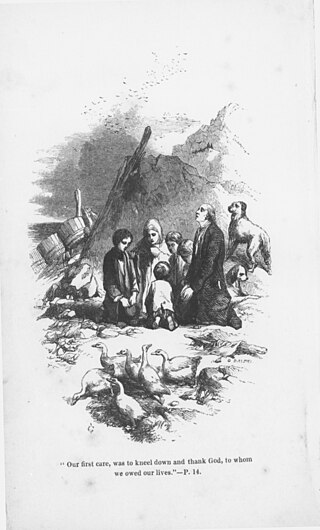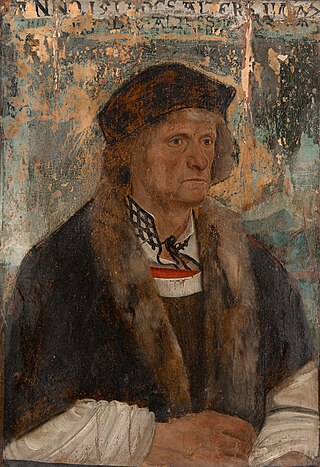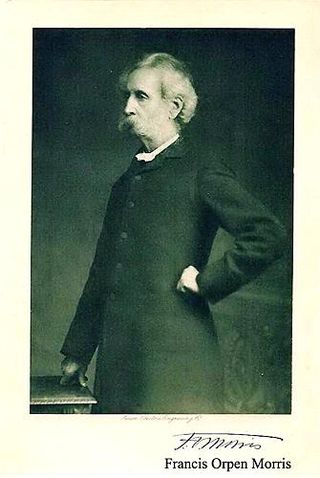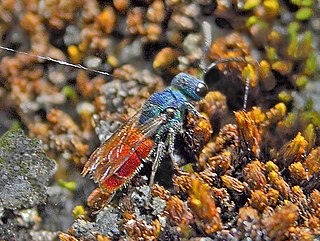
Henry Patrick Clarke RHA was an Irish stained-glass artist and book illustrator. Born in Dublin, he was a leading figure in the Irish Arts and Crafts Movement.

Conrad Gessner was a Swiss physician, naturalist, bibliographer, and philologist. Born into a poor family in Zürich, Switzerland, his father and teachers quickly realised his talents and supported him through university, where he studied classical languages, theology and medicine. He became Zürich's city physician, but was able to spend much of his time on collecting, research and writing. Gessner compiled monumental works on bibliography and zoology and was working on a major botanical text at the time of his death from plague at the age of 49. He is regarded as the father of modern scientific bibliography, zoology and botany. He was frequently the first to describe species of plants or animals in Europe, such as the tulip in 1559. A number of plants and animals have been named after him.

Emil Erich Kästner was a German writer, poet, screenwriter and satirist, known primarily for his humorous, socially astute poems and for children's books including Emil and the Detectives. He received the international Hans Christian Andersen Medal in 1960 for his autobiography Als ich ein kleiner Junge war. He was nominated for the Nobel Prize in Literature in six separate years.

Lucerne or Luzern is a city in central Switzerland, in the German-speaking portion of the country. Lucerne is the capital of the canton of Lucerne and part of the district of the same name. With a population of approximately 82,000 people, Lucerne is the most populous city in Central Switzerland, and a nexus of economics, transportation, culture, and media in the region. The city's urban area consists of 19 municipalities and towns with an overall population of about 220,000 people.

Myrmecology is a branch of entomology focusing on the scientific study of ants. Some early myrmecologists considered ant society as the ideal form of society and sought to find solutions to human problems by studying them. Ants continue to be a model of choice for the study of questions on the evolution of social systems because of their complex and varied forms of eusociality. Their diversity and prominence in ecosystems also has made them important components in the study of biodiversity and conservation. Recently, ant colonies are also studied and modeled for their relevance in machine learning, complex interactive networks, stochasticity of encounter and interaction networks, parallel computing, and other computing fields.

Lionel Walter Rothschild, 2nd Baron Rothschild, Baron de Rothschild, was a British banker, politician, zoologist and soldier, who was a member of the Rothschild family. As a Zionist leader, he was presented with the Balfour Declaration, which pledged British support for a Jewish national home in Palestine. Rothschild was the president of the Board of Deputies of British Jews from 1925 to 1926.

The Swiss Family Robinson is a novel by the Swiss author Johann David Wyss, first published in 1812, about a Swiss family of immigrants whose ship en route to Port Jackson, Australia, goes off course and is shipwrecked in the East Indies. The ship's crew is lost, but the family and several domestic animals survive. They make their way to shore, where they build a settlement, undergoing several adventures before being rescued; some refuse rescue and remain on the island.

Dru Drury was a British collector of natural history specimens and an entomologist. He received specimens collected from across the world through a network of ship's officers and collectors including Henry Smeathman. His collections were utilized by many entomologists of his time to describe and name new species and he is best known for his book Illustrations of natural history which includes the names and descriptions of many insects, published in parts from 1770 to 1782 with most of the copperplate engravings done by Moses Harris.

Johann Amerbach was a celebrated printer in Basel in the 15th century. He was the first printer in Basel to use the Roman type instead of Gothic and Italian and spared no expense in his art.

Fussball-Club Luzern, or simply abbreviated to FCL, is a Swiss sports club based in Lucerne. It is best known for its professional football team, which plays in the Super League, the top tier of the Swiss football league system, and has won the national title once and the national cup three times.

Maria Sibylla Merian was a German entomologist, naturalist and scientific illustrator. She was one of the earliest European naturalists to document observations about insects directly. Merian was a descendant of the Frankfurt branch of the Swiss Merian family.

Ebikon is a municipality in the district of Lucerne in the canton of Lucerne in Switzerland.

Andrey Avinoff ; was an internationally-known artist, lepidopterist, museum director, professor, bibliophile and iconographer, who served as the director of the Carnegie Museum of Natural History in Pittsburgh from 1926 to 1945.

Francis Orpen Morris was an Anglo-Irish clergyman, notable as "parson-naturalist" and as the author of many children's books and books on natural history and heritage buildings. He was a pioneer of the movement to protect birds from the plume trade and was a co-founder of the Plumage League. He died on 10 February 1893 and was buried at Nunburnholme, East Riding of Yorkshire, England.

Paleoart is any original artistic work that attempts to depict prehistoric life according to scientific evidence. Works of paleoart may be representations of fossil remains or imagined depictions of the living creatures and their ecosystems. While paleoart is typically defined as being scientifically informed, it is often the basis of depictions of prehistoric animals in popular culture, which in turn influences public perception of and fuels interest in these animals. The word paleoart is also used in an informal sense, as a name for prehistoric art, most often cave paintings.

Franz Karl Basler-Kopp (1879–1937) was a German painter who lived in Switzerland. In addition to works with historic and biblical scenes, symbolic portrayals of the phases of life, he created, most famously, illustrations of legends and fairy tales. He was educated at the Lucerne University of Applied Sciences and Arts.

Louis Schaub is a professional footballer who plays as an attacking midfielder for 2. Bundesliga club Hannover 96. Born in Germany, he plays for the Austria national team.

Djibi, the Kitten is the last novel of Felix Salten, published originally in 1945 and translated into English in 1946. Similarly as in other Salten's late books, the protagonist is an animal, this time a young female cat called Djibi.

Chrysis ruddii, the ruby-tailed wasp, is a species of cuckoo wasps, an insects in the family Chrysididae.

Chrysis fulgida, the ruby-tailed wasp, is a species of cuckoo wasp in the family Chrysididae.


















